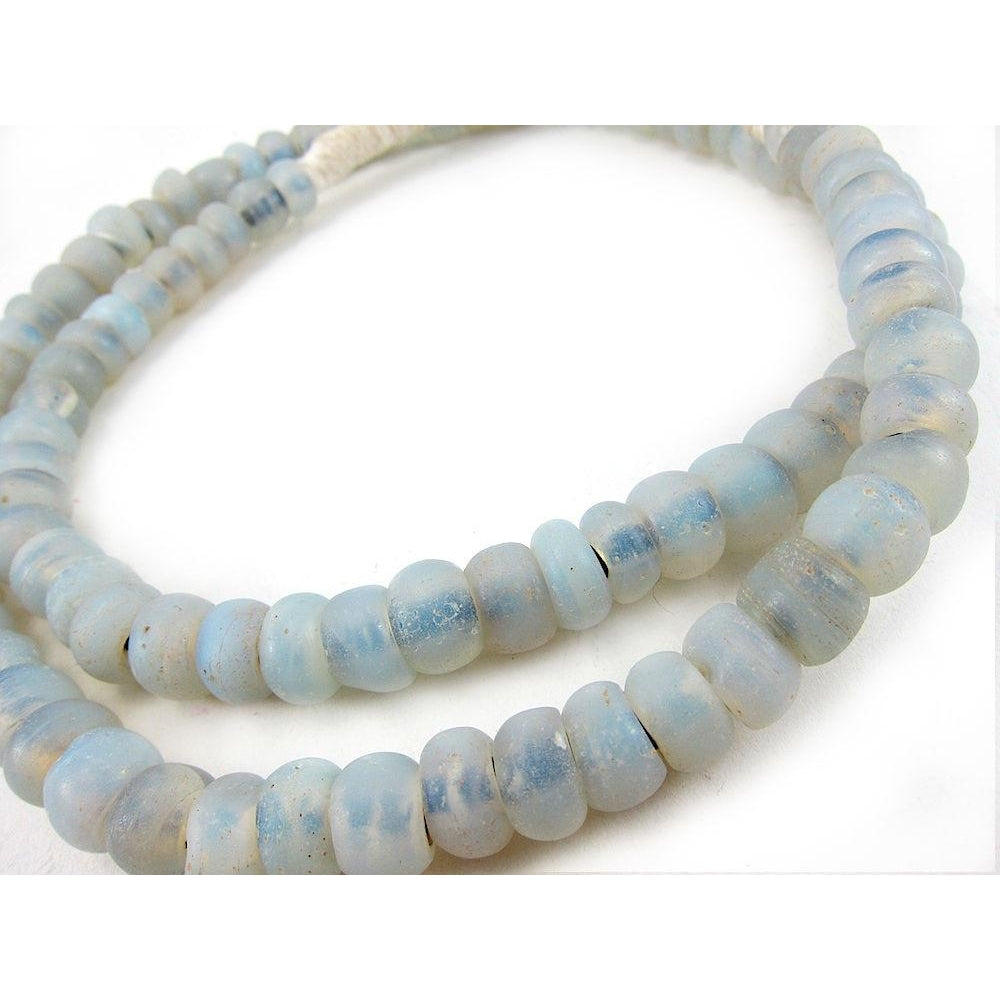18th-19th Dutch Opalescent Glass Beads / Necklace 1
- 18th-19th Dutch Opalescent Glass Beads / Necklace
- Some of the earliest hand wound glass beads that entered the African Trade were created in Holland. These rare and fine opalescent glass beads were highly prized and treasured by the Dogon people of Mali, West Africa, where they originally entered West Africa in the 18th and 19th century Spice Trade. The beads were carried into Mali via early Dutch Traders and were sometimes also referred to as Dutch East India Company Trade Beads. These beads were so highly valued for their dazzling opalescence that they were carried across Islamic Trade Routes as high value commodities as far as the lands of Ethiopia.
- Holland’s bead industry was rather short lived, but was extremely active in it’s heyday. By 1550, it was reported that there was an active community of Venetian glass makers from Murano setting up shop in Amsterdam. Our fine example in the photograph was likely created somewhere between the 1700’s to mid 1800’s.
- These treasured antique Heirloom Beads were often used by Dogon people as Dowry Currency, or Bride Wealth. They were passed down through generations of Dogon women for over 200 years. An abundance of the high quality beads in this necklace took years, if not decades to collect.
- Length : Approx. 36″
- Bead Size Approx. : 13mm x 9mm
- This superb strand with matte white to slightly opalescent hand wound 18th to 19th century Dutch beads remains in the original configuration as it was purchased in Mali, West Africa years ago.













